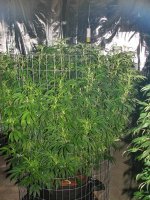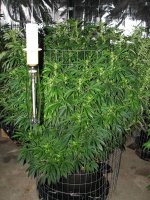Thomkal Vwalaa
Member
This thread has shined some light on why this plant food buddy has (Natures Nectar) gives same mixing direction for veg or flower which struck me as odd for a formula that came in 3 separate bottles for N P and K - why bother. I think it may have been dis-continued so apparently it didn't do to well but seems a good opportunity for an experiment.
I wasn't too impressed with the flowers on a small crop with this formula so...I figure a side by side test is in order for the next batch of ladies...
but what to test...I imagine 3 groups ... a control of sorts to eat the same food year round and then maybe a 2nd with extra P in flower and a 3rd with extra K instead..?..
or maybe just keep it simple with two groups - one without no food change and one with the typical raised P and lowered N
natures nectar were not discontinued. the factory was raided as a supposed drug lab. nature's nectar was bought by organa and continue to be made. but yeah, i always thought having npk separate was interesting.






